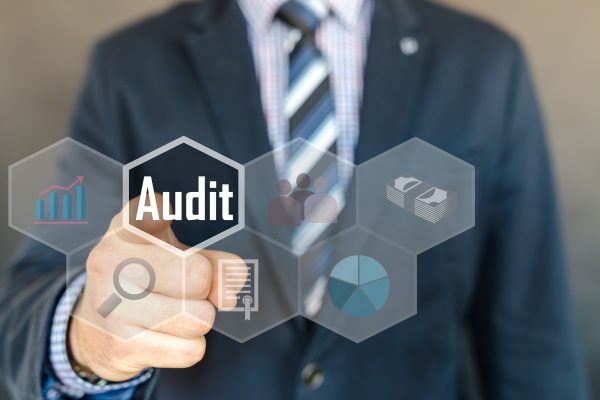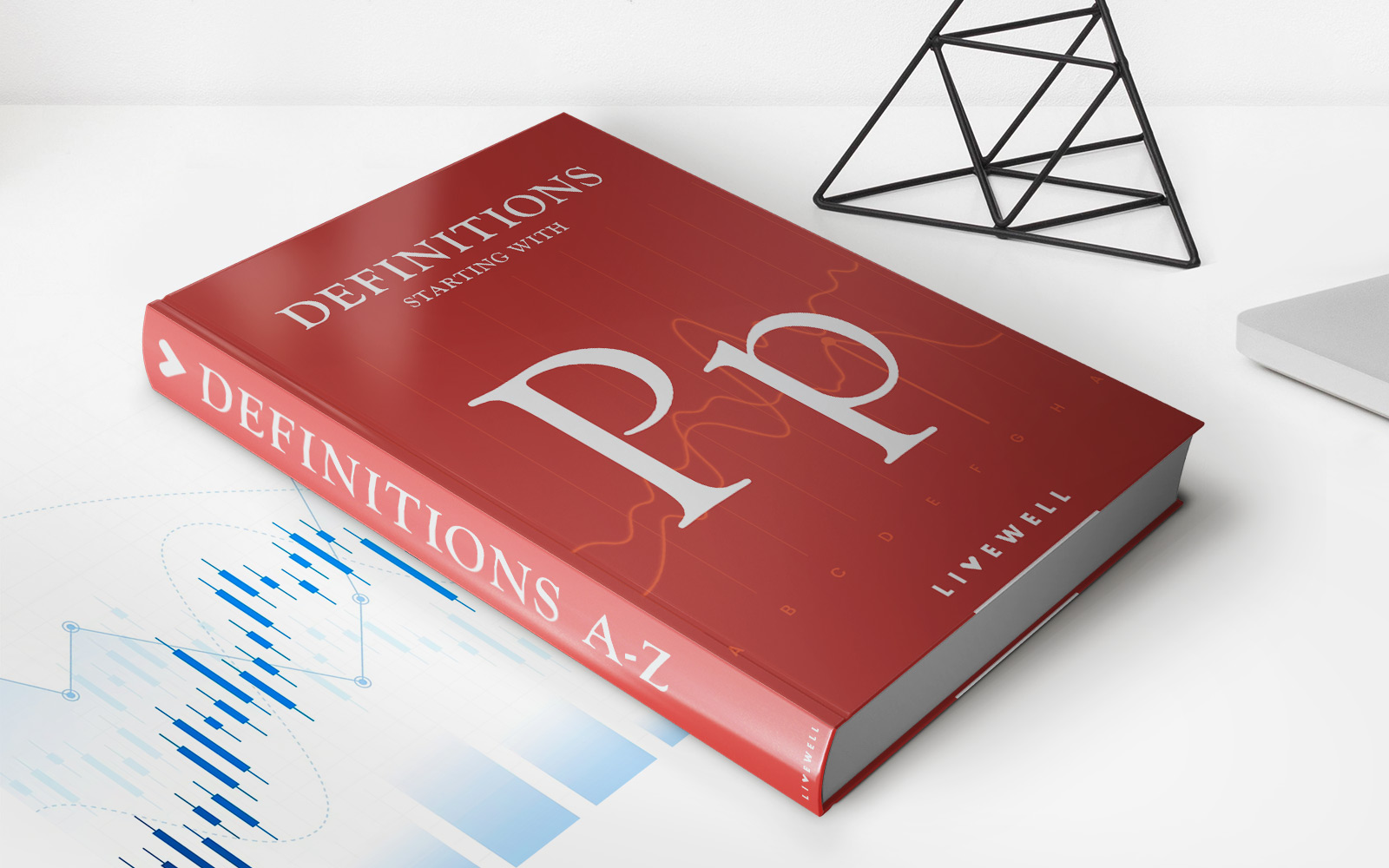

Finance
What Is IPE In Auditing?
Published: December 28, 2023
Learn about IPE in auditing and its importance in finance. Stay updated with the latest practices and regulations to ensure accurate financial reporting.
(Many of the links in this article redirect to a specific reviewed product. Your purchase of these products through affiliate links helps to generate commission for LiveWell, at no extra cost. Learn more)
Table of Contents
Introduction
In today’s fast-paced and complex business world, auditing plays a crucial role in ensuring transparency, accountability, and trustworthiness. Auditors are responsible for verifying the accuracy and reliability of financial statements, identifying potential risks and fraud, and providing assurance to stakeholders. However, with the evolving landscape of technology and globalization, auditors face new challenges in performing their duties effectively.
One such challenge is keeping up with the rapid advancements in information technology. As businesses rely more on digital systems and data, auditors need to adapt their methodologies to effectively assess the reliability of these systems and the information they generate. This is where Information Technology Auditing (ITA) comes into play.
ITA, also known as IT auditing, is a branch of auditing that focuses on the assessment of IT systems, processes, and controls within an organization. It aims to evaluate the effectiveness of an organization’s IT infrastructure, detect potential risks and vulnerabilities, and ensure compliance with regulatory requirements.
In the world of IT auditing, one essential concept that auditors need to understand is IPE, or Information Process Environment. IPE refers to the network of interconnected systems, databases, applications, and processes that generate, store, and transmit information within an organization. It encompasses the entire lifecycle of data, from its creation to its destruction.
Understanding IPE is crucial for auditors because it helps them assess the reliability, integrity, and security of the information they are auditing. By gaining insights into the IPE, auditors can identify potential risks and vulnerabilities that may impact the accuracy and completeness of the financial information. They can then design and perform audit procedures to address these risks effectively.
Throughout this article, we will explore the definition, importance, and benefits of IPE in auditing. We will also discuss the role of IPE in the audit process and the challenges and limitations that auditors may face when dealing with IPE. Lastly, we will provide some best practices for implementing IPE in auditing to ensure a smooth and effective audit process.
Definition of IPE
Information Process Environment, or IPE, refers to the interconnected network of systems, databases, applications, and processes that generate, store, and transmit information within an organization. It encompasses all the technology and procedures involved in the handling of data throughout its lifecycle.
In the context of auditing, IPE plays a vital role in assessing the reliability and integrity of the information being audited. It provides auditors with insights into the systems and processes that generate financial data, helping them understand how the information is captured, processed, and reported.
The IPE includes various components such as enterprise resource planning (ERP) systems, financial software applications, databases, data warehouses, and other information management systems. These components work together to facilitate the collection, storage, processing, and dissemination of data within an organization.
Furthermore, the IPE also encompasses the controls and security measures implemented within these systems to protect the confidentiality, integrity, and availability of the information. This includes access controls, encryption methods, backup procedures, and disaster recovery plans.
By understanding the IPE, auditors gain insights into the technology infrastructure and processes that underpin the generation and reporting of financial information. This knowledge enables auditors to assess the reliability, accuracy, and completeness of the data, identify potential risks and vulnerabilities, and design effective audit procedures to address these risks.
It’s important to note that the scope of the IPE may vary depending on the organization’s size, industry, and complexity of its operations. For some organizations, the IPE may be relatively straightforward, consisting of a few core systems and processes. In contrast, larger organizations with diverse operations may have a more complex IPE with multiple interconnected systems and databases.
Overall, a clear understanding of the IPE is essential for auditors to effectively evaluate the quality of the information they are auditing and provide stakeholders with reliable and trustworthy financial statements. It allows auditors to assess the internal controls, data integrity, and security measures in place within the organization’s information systems and ensures the accuracy and completeness of the audited financial information.
Importance and Benefits of IPE in Auditing
Understanding the importance and benefits of Information Process Environment (IPE) in auditing is crucial for auditors to effectively perform their duties and provide stakeholders with reliable and accurate financial information. Here are some key reasons why IPE holds significance in the audit process:
- Assessing Data Reliability: The IPE provides auditors with insights into the systems and processes that generate financial data. This allows them to assess the reliability and integrity of the information being audited. By understanding the data flow, auditors can identify any potential risks or inconsistencies in the data, ensuring the accuracy of the financial statements.
- Evaluating Internal Controls: Internal controls play a vital role in ensuring the accuracy and completeness of financial information. The IPE allows auditors to examine the controls in place within an organization’s information systems. They can assess the effectiveness of access controls, segregation of duties, and other control mechanisms to ensure the integrity of the data being audited.
- Detecting Fraud and Misstatement: By analyzing the IPE, auditors can identify potential risks and vulnerabilities that may lead to fraud or misstatement of financial information. They can scrutinize the system controls and data processes for any anomalies or red flags, enabling them to detect and investigate fraudulent activities and accounting irregularities.
- Improving Efficiency and Effectiveness: A clear understanding of the IPE allows auditors to design and perform audit procedures efficiently. They can tailor their testing procedures to focus on high-risk areas within the IPE, optimizing time and resources. This targeted approach enhances the effectiveness of the audit, ensuring that potential issues are identified and addressed appropriately.
- Enhancing Compliance: Regulatory compliance is a critical aspect of auditing, especially in highly regulated industries. The IPE provides auditors with insights into whether an organization’s information systems and processes adhere to regulatory requirements. It allows auditors to assess the organization’s compliance with data privacy, security, and financial reporting regulations.
- Facilitating Financial Decision-Making: Accurate and reliable financial information is essential for effective decision-making at all levels of an organization. By understanding the IPE, auditors ensure the quality and integrity of the financial information provided to management and stakeholders. This, in turn, facilitates informed decision-making and enhances the organization’s overall financial performance.
In summary, the importance of IPE in auditing cannot be understated. It enables auditors to assess data reliability, evaluate internal controls, detect fraud and misstatement, improve efficiency and effectiveness, enhance compliance, and facilitate financial decision-making. By understanding and leveraging the IPE, auditors can deliver reliable and accurate audit results, providing stakeholders with the confidence they need in the organization’s financial statements.
Role of IPE in Auditing
The Information Process Environment (IPE) plays a critical role in the audit process. It serves as a foundation for auditors to assess the reliability, integrity, and security of the information being audited. Here are the key roles that IPE plays in auditing:
- Data Analysis: The IPE provides auditors with access to the data generated by an organization’s systems and processes. By analyzing this data, auditors can gain insights into the financial transactions and activities of the organization. This allows them to identify patterns, anomalies, and potential risks that may impact the accuracy of the financial statements.
- Process Evaluation: Understanding the IPE enables auditors to assess the effectiveness and efficiency of an organization’s data processing and information management processes. They can evaluate the control mechanisms in place to ensure the accuracy, completeness, and timeliness of data processing. This includes reviewing the data capture, validation, transformation, and reporting processes to identify any weaknesses or areas for improvement.
- Risk Assessment: The IPE plays a significant role in identifying and assessing risk factors that could impact the reliability of the financial information. Auditors can evaluate the control environment within the IPE to identify potential risks and vulnerabilities. They can then determine the appropriate audit procedures to mitigate these risks and obtain sufficient evidence to support their findings.
- Testing and Sampling: The IPE provides auditors with the necessary information to design and perform testing procedures. Auditors can select samples from the IPE to test the accuracy and completeness of the financial data. This may involve auditing specific transactions, reconciling data between different systems, or conducting data analytics to identify any potential errors or irregularities.
- Internal Controls Evaluation: Auditors rely on the IPE to assess the design and effectiveness of the internal controls in an organization. They can evaluate the control activities within the IPE to ensure that appropriate segregation of duties, authorization processes, and access controls are in place. This allows auditors to determine the reliability of the internal controls and identify any deficiencies that may pose risks to the accuracy of the financial information.
- Audit Trail Analysis: The IPE provides auditors with an audit trail, which is a chronological record of the financial transactions and activities within the organization. Auditors can trace and analyze the flow of data and transactions through the IPE to ensure that all relevant information has been captured and accurately reported. This helps in verifying the completeness and accuracy of the financial statements.
In summary, the IPE plays a crucial role in the audit process by providing auditors with essential data, insights, and tools to assess the reliability, integrity, and security of the information being audited. It enables auditors to analyze data, evaluate processes, assess risks, design testing procedures, evaluate internal controls, and analyze the audit trail. By leveraging the IPE effectively, auditors can ensure the accuracy and reliability of the financial information provided to stakeholders.
Challenges and Limitations of IPE in Auditing
While the Information Process Environment (IPE) has numerous benefits and plays a crucial role in auditing, it also presents several challenges and limitations that auditors need to be aware of. Understanding these challenges is essential for auditors to effectively navigate the audit process. Here are some key challenges and limitations of IPE in auditing:
- Complexity and Integration: The IPE of modern organizations is often complex and highly integrated. It involves numerous interconnected systems, databases, and applications. Auditors must be knowledgeable about the intricacies of these systems and the interdependencies between them to understand how data moves throughout the organization. This complexity can make the identification and evaluation of risks and controls challenging for auditors.
- Technological Advancements: Technology is continually evolving, and the IPE is continually changing. New technologies, software, and systems are introduced frequently, which can pose challenges for auditors. Keeping up with the latest technology trends and understanding how they impact the IPE is critical for auditors to effectively evaluate the reliability and security of the information being audited.
- Data Integrity and Quality: The IPE relies heavily on accurate and reliable data. However, data integrity and quality issues can arise from various sources, such as human error, system glitches, or inadequate data governance. Auditors must be vigilant in assessing the quality and reliability of the data within the IPE to ensure the accuracy of the audited financial information.
- Data Protection and Privacy: The IPE often contains sensitive and confidential information. Ensuring the protection and privacy of this data is a significant concern for auditors. They must assess the adequacy and effectiveness of the controls in place to protect the data from unauthorized access, breaches, and cyber threats. Compliance with data protection and privacy regulations adds an additional layer of complexity to auditing the IPE.
- Limitations of System Controls: While organizations implement control measures within their systems, these controls may have limitations. Auditors need to be aware of potential control gaps and weaknesses within the IPE. These limitations may include inadequate segregation of duties, limited system logging, or reliance on manual processes. Auditors must design and perform additional audit procedures to compensate for these limitations and mitigate the associated risks.
It is crucial for auditors to recognize and address these challenges and limitations when auditing the IPE. They should stay updated with emerging technologies, regulations, and industry best practices to effectively evaluate the reliability and security of the information generated by the IPE. By understanding the inherent challenges and limitations, auditors can implement appropriate audit procedures and provide stakeholders with reliable and accurate audit results.
Best Practices for Implementing IPE in Auditing
Implementing Information Process Environment (IPE) in auditing requires careful planning, execution, and monitoring. By following best practices, auditors can enhance the effectiveness and efficiency of their audit procedures. Here are some key best practices for implementing IPE in auditing:
- Understanding the Business: Gain a deep understanding of the organization’s business processes, objectives, and risks. This understanding will help auditors align their audit procedures with the organization’s goals and objectives, ensuring the assessment of the IPE’s applicability in the context of the business.
- Collaboration with IT Professionals: Engage with the organization’s IT professionals to gain insights into the technical aspects of the IPE. Collaborating with IT professionals will help auditors understand the organization’s IT infrastructure, systems, and data management processes, effectively incorporating the IPE into the audit process.
- Continuous Learning and Technology Awareness: Stay updated with the latest technology trends, industry best practices, and emerging risks related to the IPE. Regularly attend relevant training sessions and seminars to enhance knowledge and keep pace with the evolving technological landscape.
- Risk Assessment and Scoping: Conduct a thorough risk assessment to identify the key risks and vulnerabilities associated with the IPE. Evaluate the impact of these risks on the financial statements and prioritize audit procedures accordingly. Scope the audit engagements effectively to focus on high-risk areas within the IPE.
- Data Analytics and Automation: Leverage data analytics and automation tools to enhance the efficiency and effectiveness of audit procedures within the IPE. These tools can help auditors analyze large volumes of data quickly, identify patterns, anomalies, and potential risks, and facilitate a more systematic and targeted approach to auditing.
- Document and Maintain IPE Inventory: Create and maintain an inventory of the systems, applications, databases, and processes that constitute the IPE. Documenting the IPE inventory helps auditors understand the data flows, system interactions, and key control points within the IPE. It also facilitates the identification of data sources for audit testing and assessment.
- Periodic System Reviews: Conduct periodic reviews of the IPE to assess the effectiveness of system controls and identify any changes or updates that may impact the audit process. This ensures that the audit procedures remain relevant and aligned with the evolving technology landscape.
- Strong Communication and Reporting: Maintain open and clear communication with management and stakeholders throughout the audit process. Clearly communicate the findings, implications, and recommendations related to the IPE. Provide a balanced and concise audit report that highlights areas of strength and improvement within the IPE.
By following these best practices, auditors can effectively leverage the IPE to assess the reliability, integrity, and security of the information being audited. These practices promote a systematic and targeted approach, enhance collaboration between auditors and IT professionals, and ensure the audit procedures are aligned with the organization’s business objectives. Implementing these best practices will result in improved audit outcomes and provide stakeholders with reliable and accurate financial information.
Conclusion
The Information Process Environment (IPE) plays a vital role in auditing, enabling auditors to assess the reliability, integrity, and security of the information being audited. It provides auditors with insights into the systems, processes, and controls that generate and manage financial data within an organization. By understanding and effectively implementing the IPE, auditors can enhance the quality and accuracy of their audit procedures, providing stakeholders with reliable and trustworthy financial information.
Throughout this article, we have explored the definition of IPE and its importance in auditing. We have discussed the benefits of IPE, including assessing data reliability, evaluating internal controls, detecting fraud and misstatement, improving efficiency and effectiveness, enhancing compliance, and facilitating financial decision-making.
However, it is crucial to recognize the challenges and limitations that auditors may face when dealing with the IPE. These challenges include the complexity and integration of systems, technological advancements, data integrity and quality issues, data protection and privacy concerns, and limitations of system controls. Despite these challenges, auditors can overcome them by following best practices such as understanding the business, collaborating with IT professionals, continuous learning and technology awareness, risk assessment and scoping, data analytics and automation, documenting and maintaining IPE inventory, periodic system reviews, and strong communication and reporting.
In conclusion, the IPE is an indispensable component of auditing in the modern business landscape. It allows auditors to have a comprehensive understanding of an organization’s technology infrastructure, data processes, and control environment. By harnessing the power of the IPE, auditors can provide stakeholders with reliable financial information, enhance compliance, mitigate risks, and contribute to the overall success of the organization. As technology continues to evolve, auditors must continually adapt and refine their understanding of the IPE to ensure effective and efficient auditing practices.














